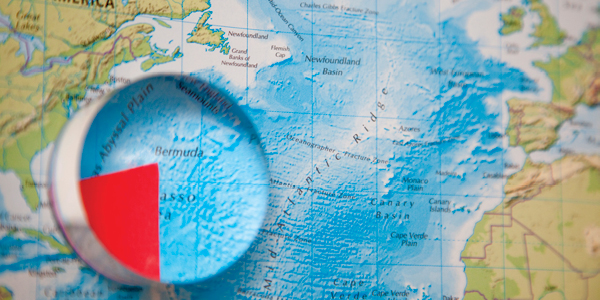Is Asia The New Bermuda Triangle?

Large shipping losses declined by 38 percent globally over the past decade, but losses in Asia rose year-on-year, with incidents in the South China, Indochina, Indonesia, and Philippine maritime regions rising 25 percent. That makes Asia the top area worldwide for major shipping incidents in the past decade, leading it to be dubbed the "new Bermuda Triangle," according to Allianz Global Corporate & Specialty’s (AGCS) Safety & Shipping Review 2018.
The shipping sector reported 94 total losses in 2017, down 4 percent year-on-year—the second-lowest in 10 years after 2014. Bad weather, including typhoons and storms in Asia and the United States, contributed to the loss of more than 20 vessels, notes the annual review, which analyzes reported shipping losses of more than 100 gross tons.
Dangerous seas and territorial disputes. Political tensions around major Asian shipping routes are leading to disruption and possibly heightened collision risk. A key route for east-west trade from China, South Korea, and Japan, and accounting for one-third of global shipping trade, the South China Sea is also the cause of territorial disputes among several countries.
These disputes have resulted in increasing military presence in the South China Sea, with the United States and China conducting naval exercises. 2017 saw two major collisions: The U.S.-guided missile destroyer USS Fitzgerald collided with a containership off Japan, while the USS John S. McCain struck an oil tanker off Singapore.
Across Asia and Africa, the threat of piracy remains high, with regional waters accounting for 74 percent of all incidents worldwide despite record lows globally. In 2017, incidents in Southeast Asia increased 11 percent (68) while Indonesia continues to be a leading hotspot with 43. Attacks in the Philippines more than doubled from 10 in 2016 to 22 in 2017.
Emerging risks lead to losses. The shipping sector faces multiple new risk exposures. Ever-larger containerships pose fire containment and salvage issues. Climate change impacts ice hazards, freeing up new trade routes in some areas but increasing the risk of collisions with ice in others. China plans an "Arctic Silk Road" from new shipping lanes opened up by global warming and will conduct commercial voyages in Arctic waters to build its first polar expedition cruise ship by 2019.
Environmental scrutiny is also growing as the industry seeks to cut emissions, bringing new technical risks and the threat of machinery damage incidents. Other challenges include balancing the benefits and risks of increasing automation on board. NotPetya malware recently caused cargo delays and congestion at nearly 80 ports, underlining the emerging risks that the sector faces.
Human error a big issue; data can help. Fatal accidents persist, with human behavior often a factor. Estimates indicate that 75 to 96 percent of accidents involve human error.
"By analyzing data 24/7, we can gain insights from crew behavior and near-misses that can identify trends," says Captain Rahul Khanna, global head of marine risk consulting, AGCS. "The shipping industry has learned from losses in the past, but predictive analysis could be the difference between a safe voyage and a disaster."
